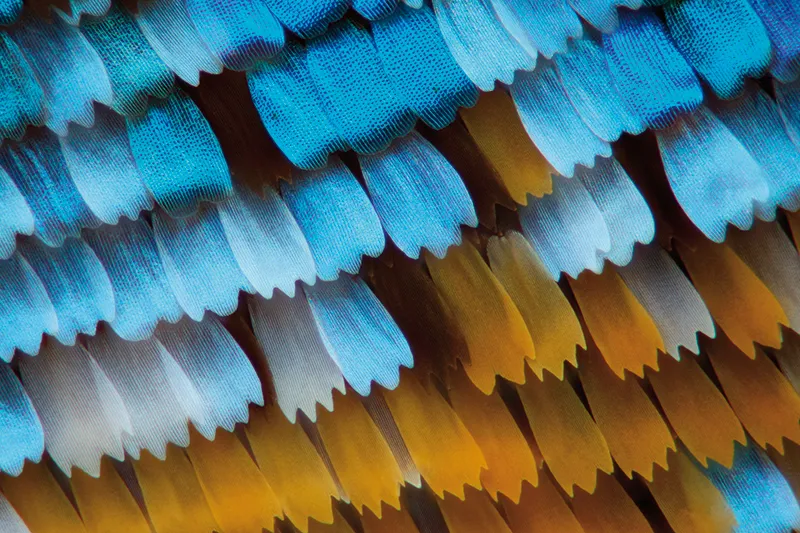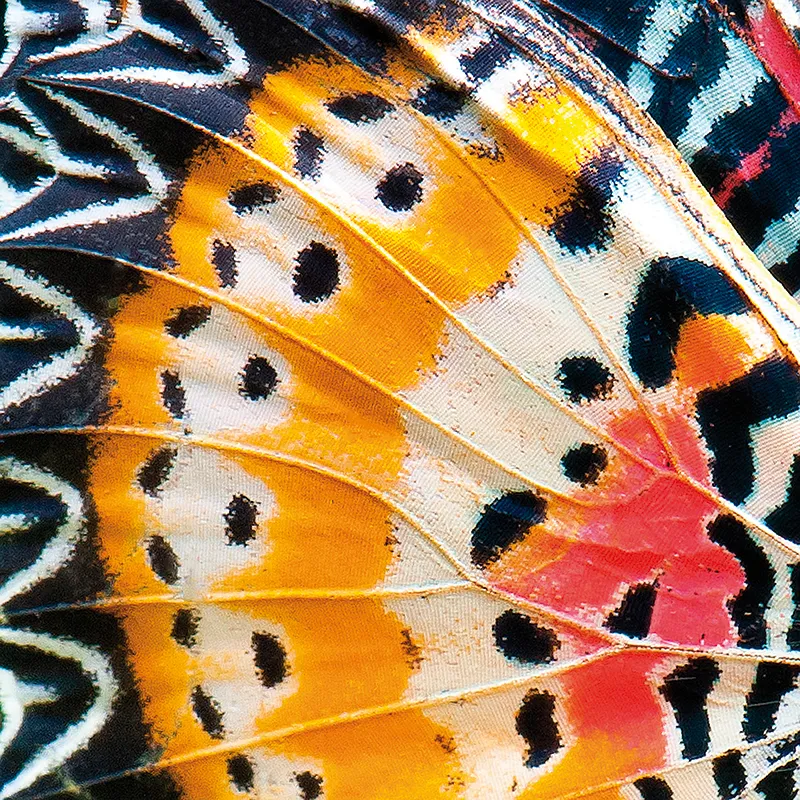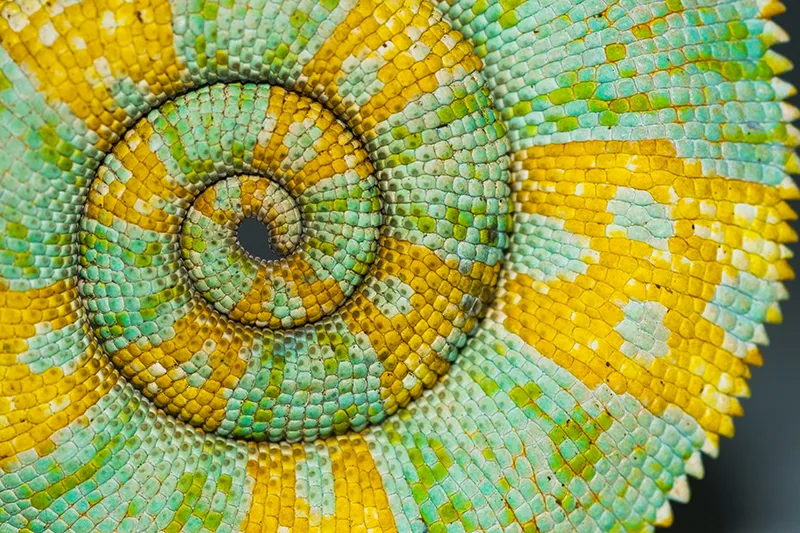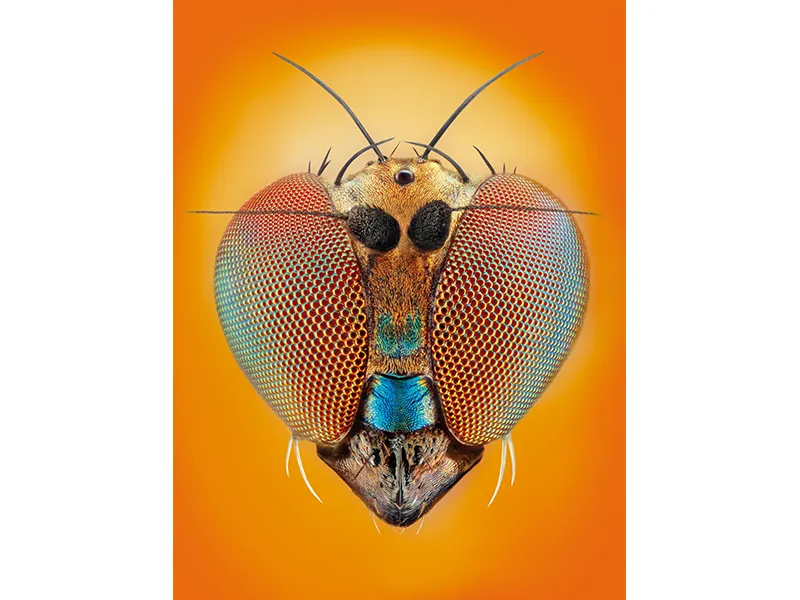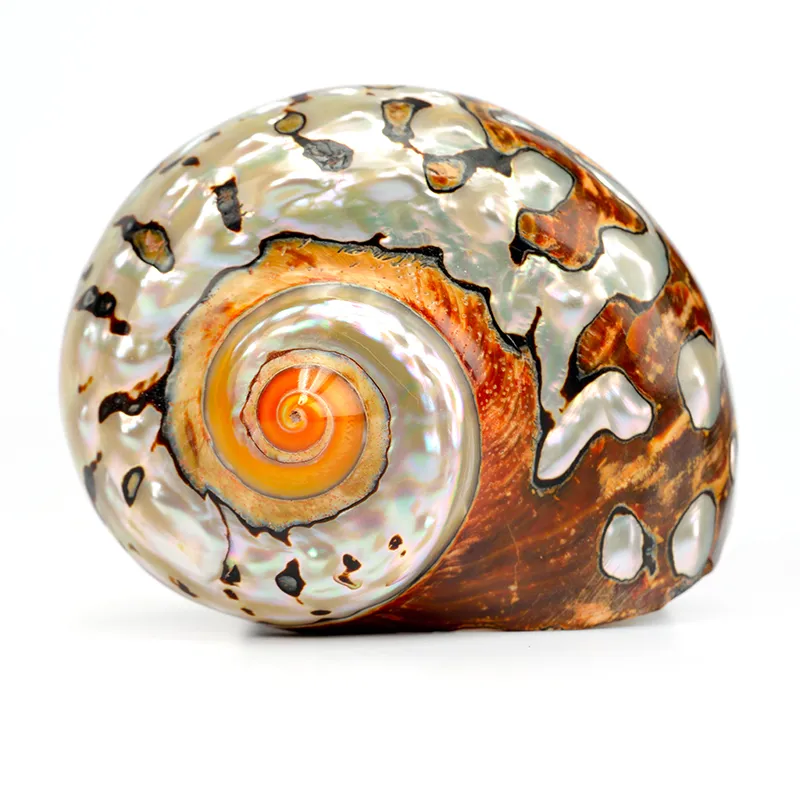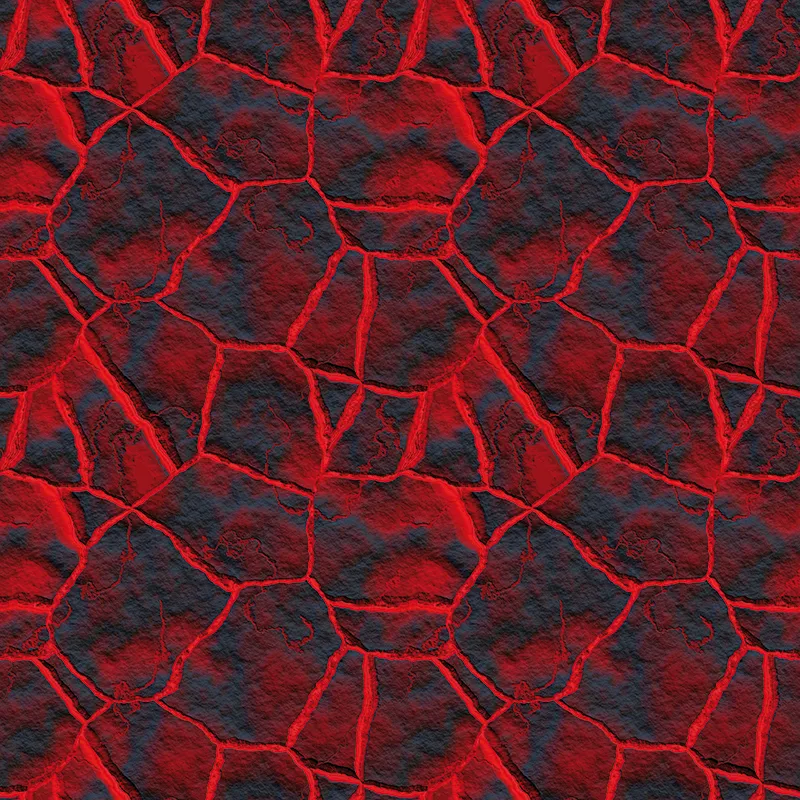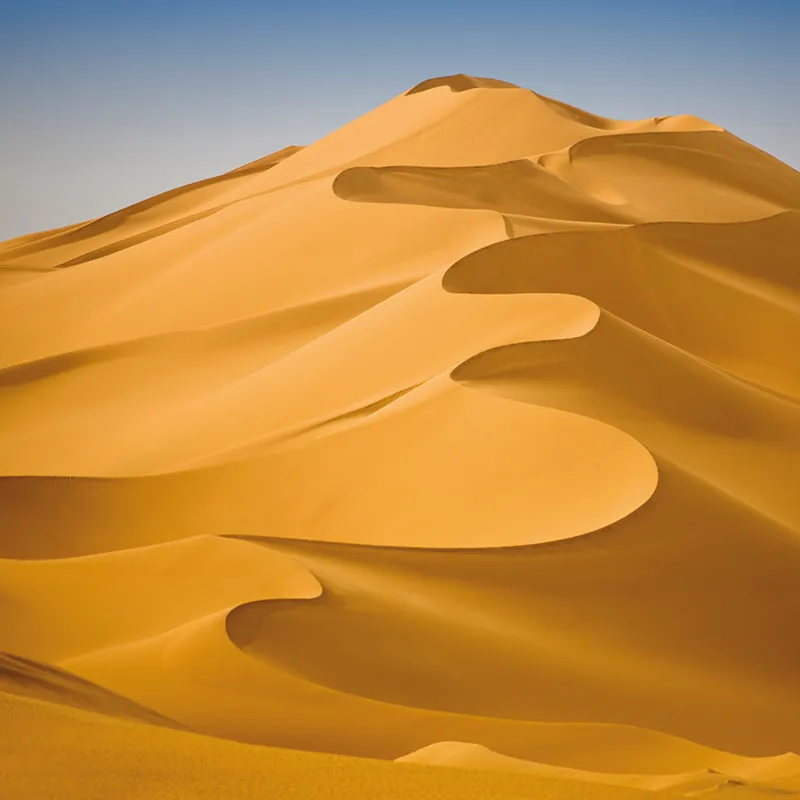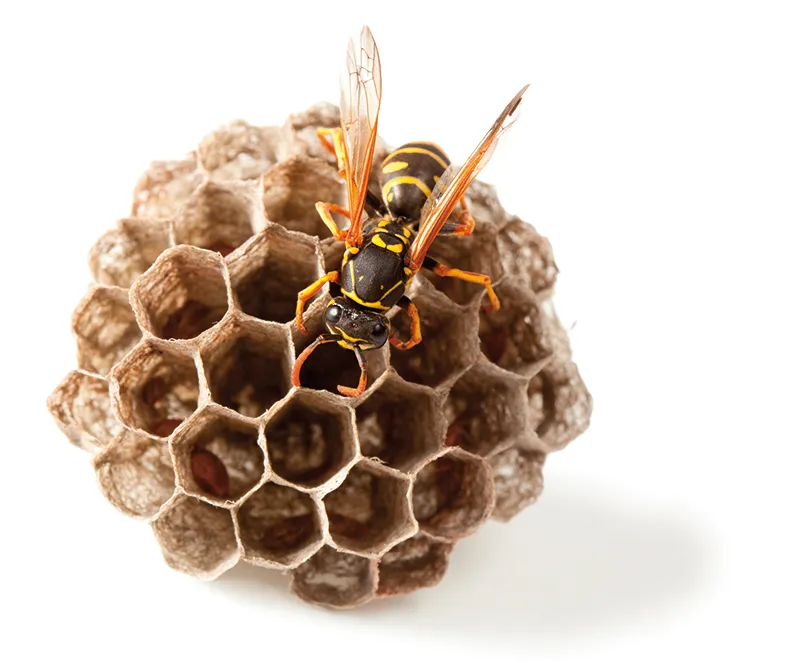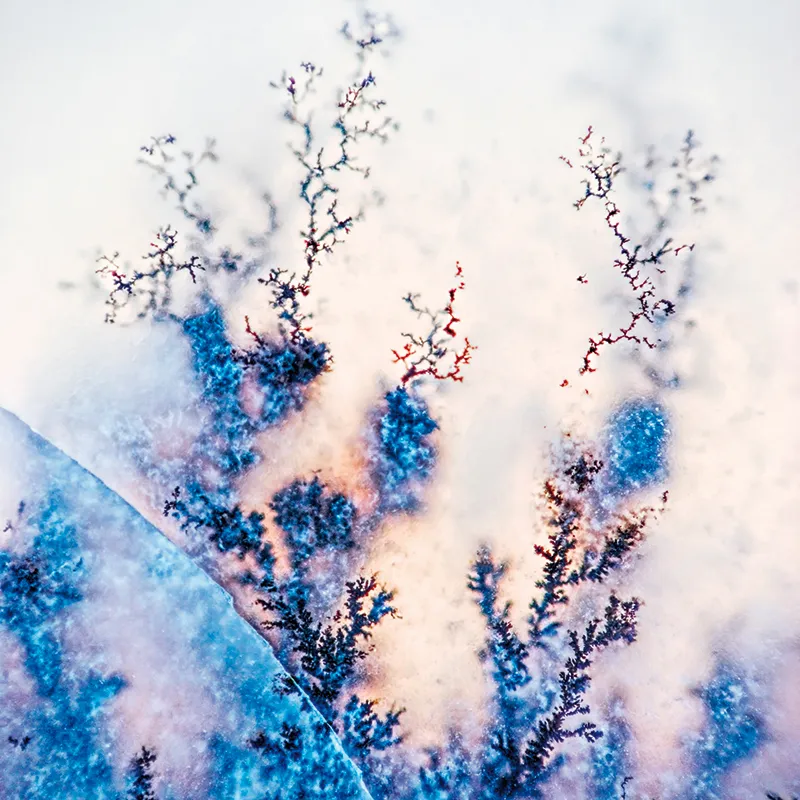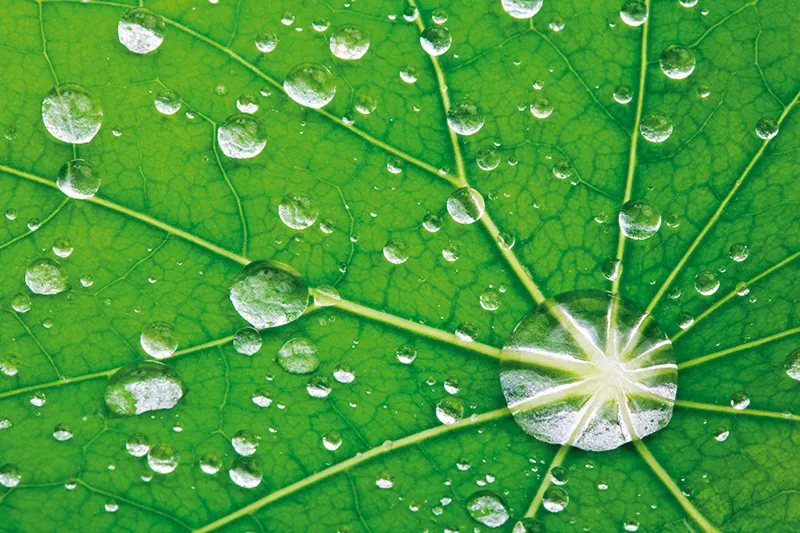The Science Behind Nature’s Patterns
A new book explores the physical and chemical reasons behind incredible visual structures in the living and non-living world
The curl of a chameleon's tail, the spiral of a pinecone's scales and the ripples created by wind moving grains of sand all have the power to catch the eye and intrigue the mind. When Charles Darwin first proposed the theory of evolution by natural selection in 1859, it encouraged science enthusiasts to find reasons for the natural patterns seen in beasts of the land, birds of the air and creatures of the sea. The peacock's plumage, the spots of a shark must all serve some adaptive purpose, they eagerly surmised.
Yet one person saw all this as "runaway enthusiasm," writes English scientist and writer Philip Ball in his new book, Patterns in Nature: Why the Natural World Looks the Way it Does. Scottish zoologist D’Arcy Wentworth Thompson was pushed to publish his own treatise in 1917 explaining that even nature's creativity is constrained by laws generated by physical and chemical forces. Thompson's ideas didn't clash with Darwin's theory, but they did point out that other factors were at play. Whereas natural selection might explain the why of a tiger's stripes—a strategy to blend in with shadows in grasslands and forest— the way that chemicals diffuse through developing tissue can explain how pigment ends up in bands of dark and light, as well as why similar patterns can crop up on a sea anemone.
In Patterns in Nature, Ball brings his own background as a physicist and chemist to bear as well as more than 20 years of experience as an editor for the scientific journal Nature. His first book, published in 1999 (The Self-Made Tapestry), and a trilogy, published in 2009 (Nature’s Patterns: Shapes, Flow, Branches), explore the subject of natural patterns, but neither has visuals as rich as his latest.
The vivid photographs in the book are vital, Ball explains, because some of the patterns can only be fully appreciated through repetition. "It's when you see several of them side by side in glorious detail that you start to get a sense of how nature takes a theme and runs with it," he says.
The explanations Ball offers are simple and graceful, as when he explains how a soaked patch of ground can dry into a cracked landscape. "The dry layer at the surface tries to shrink relative to the still-moist layer below, and the ground becomes laced with tension throughout," he writes.
Yet he also offers enough detail to intrigue scientists and artists alike. The stunning photographs were curated by the designers at Marshall Editions, a publisher at the Quarto Group in London, which licensed the book to the University of Chicago Press.
Ball spoke to Smithsonian.com about his book and inspirations.
What exactly is a pattern?
I left it slightly ambiguous in the book, on purpose, because it feels like we know it when we see it. Traditionally, we think of patterns as something that just repeats again and again throughout space in an identical way, sort of like a wallpaper pattern. But many patterns that we see in nature aren't quite like that. We sense that there is something regular or at least not random about them, but that doesn't mean that all the elements are identical. I think a very familiar example of that would be the zebra's stripes. Everyone can recognize that as a pattern, but no stripe is like any other stripe.
I think we can make a case for saying that anything that isn't purely random has a kind of pattern in it. There must be something in that system that has pulled it away from that pure randomness or at the other extreme, from pure uniformity.
Why did you decide to write a book about natural patterns?
At first, it was a result of having been an editor at Nature. There, I started to see a lot of work come through the journal—and through scientific literature more broadly—about this topic. What struck me was that it's a topic that doesn't have any kind of natural disciplinary boundaries. People that are interested in these types of questions might be biologists, might be mathematicians, they might be physicists or chemists. That appealed to me. I always liked subjects that don't respect those traditional boundaries.
But I think also it was the visuals. The patterns are just so striking, beautiful and remarkable.
Then, underpinning that aspect is the question: How does nature without any kind of blueprint or design put together patterns like this? When we make patterns, it is because we planned it that way, putting the elements into place. In nature, there is no planner, but somehow natural forces conspire to bring about something that looks quite beautiful.
Do you have a favorite example of a pattern found in nature?
Perhaps one of the most familiar but really one of the most remarkable is the pattern of the snowflake. They all have the same theme—this six-fold, hexagonal symmetry and yet there just seems to be infinite variety within these snowflakes. It is such a simple process that goes into their formation. It is water vapor freezing out of humid air. There's nothing more to it than that but somehow it creates this incredibly intricate, detailed, beautiful pattern.
Another system we find cropping up again and again in different places, both in the living and the nonliving world, is a pattern that we call Turing structures. They are named after Alan Turing, the mathematician who laid the foundation for the theory of computation. He was very interested in how patterns form. In particular, he was interested in how that happens in a fertilized egg, which is basically a spherical cell that somehow gets patterned into something as complicated as a human as it grows and divides.
Turing came up with a theory that was basically an explanation for how a whole bunch of chemicals that are just kind of floating around in space can interact as to create differences from one bit of space to the next. In this way, the seeds of a pattern will emerge. He expressed that process in very abstract mathematical terms.
Now, it seems that something like this might be responsible for the patterns that form upon animal skins and some patterns we see in insects as well. But it also appears in some quite different systems, in sand dunes and sand ripples forming after wind has blown sand.
In your book, you mention the fact that science and math hasn't fully explained some of these patterns yet. Can you give an example?
We've only really understood how snowflakes get these branched formations since the 1980s even though people have studied and thought about that question for several hundred years. Yet even now it is a bit of a mystery why every arm of the snowflake can be pretty much identical. It is almost as though one arm can communicate with the others to make sure they grow in a special way. That is still surprising.
New forms of patterns are being discovered almost as fast as we can find explanations. There are strange vegetation patterns in semi-arid regions of the world where there are patches of vegetation separated by patches of bare ground. They too seem to have a Turing-like mechanism behind them but that understanding is very recent too.
What do you hope readers will find in the book?
When I started looking into this subject, I started to see patterns everywhere. I remember when I was halfway through writing my first book in 1999 and I was on a beach in Wales, I suddenly realized that everywhere there were patterns. In the clouds and the sky there were different patterns, there were wave patterns and so on in the sea. In the water running down through the sand, there was a different kind of pattern. Even the cliffs themselves weren't purely random.
So, you start to see patterns all around you. I hope that people will find this happening to them that they'll appreciate how much structure surrounding us is patterned. There's just splendor and joy in that.

